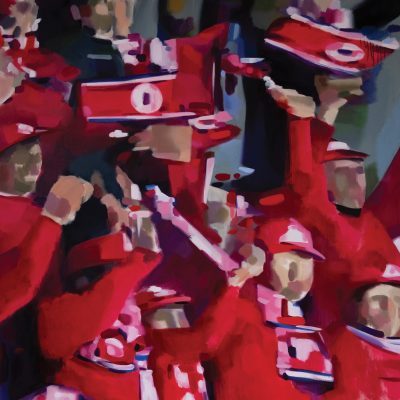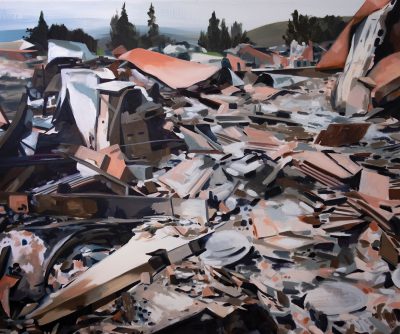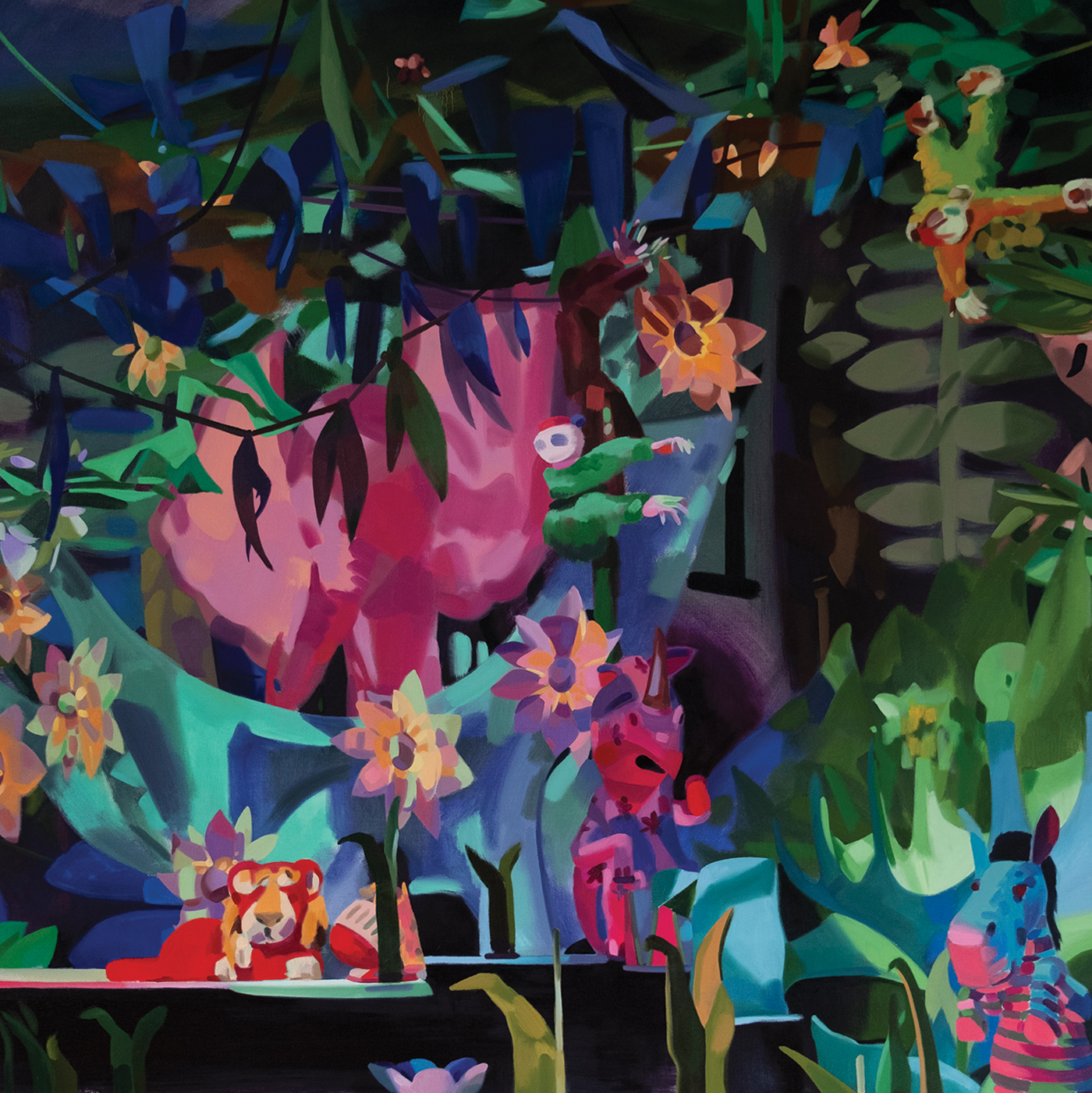Jerrin Wagstaff – Miscellaneous Debris
Art
As a visual artist, Jerrin Wagstaff understands the pressurized expectation to explore a singular topic and respond with a tidy body of work. About four years ago, Wagstaff provided himself with the complete license to let go of this expectation. With this new freedom, he turned to his lifelong habit of image-collecting. He says, “I simply followed my intuition.” While pursuing visually and conceptually interesting images, drawings and paintings came together as a response. Eventually, a unifying topic that connected the works and identified them as a family also became clear to Wagstaff. These works are Miscellaneous Debris, a solo exhibition now on display at Nox Contemporary Art Gallery.
In an unheated studio in downtown Salt Lake City, Wagstaff has been busy preparing for the show. Between family life and teaching at BYU, he comes here to paint in the early mornings with space heaters blaring and, on especially chilly days, two pairs of pants on. The wide-ranging subject matter of Miscellaneous Debris—which includes furniture advertisements, scenes of natural-disaster aftermath and still images from TMZ segments—reveals the topic of interest that Wagstaff has confidently settled into after years of explorative image collecting: We are living within a constant deluge of information. Of this breakthrough, Wagstaff says, “It wasn’t until I saw the inundation of imagery and information as the overarching subject that I felt that I was really on to something with this series.”

“Jerrin Wagstaff turns his lifelong habit of image-collecting into a collection of paintings called Miscellaneous Debris.”
For an image collector, the internet era presents both an opportunity and a problem. “I love having access to nearly the entire visual history of the world,” Wagstaff says. “The downside is that it’s hard to focus on or give thoughtful responses to everything that you’re seeing.” This is the relatable dichotomy of Wagstaff’s collecting—we are inundated to the point of frustration and confusion, yet also pleased and fascinated by the degree of access. Wagstaff explains that the high density of information can make time seem to pass by slowly, because there is more “news being put out every day” than we can possibly keep tabs on.
Wagstaff likens this contemporary “information overload” problem to the high school debate team tactic known as “spreading.” Spreading is an attempt to present lots of information at a rapid clip so that the opponent’s score will suffer because they will not feasibly be able to respond to all of the points raised. “I, like everyone else, am being spread,” Wagstaff says. Though this is a concerning revelation, Wagstaff thinks it can also be empowering. “I realized there is nothing wrong with my ability to focus on a specific topic,” Wagstaff says. The vast breadth of subject matter displayed in Miscellaneous Debris owes itself to this realization. Wagstaff says, “Rather than fight against it, I allowed my work to drift from topic to topic so that the exhibition becomes an exercise in navigating the torrent we encounter day to day.”
Information overload is also a product of the aggressive industries that compete for and rely upon our attention. In an “attention economy,” consumers allot their time and interest based on what strikes them as the most worthwhile or compelling. We use our personalized curiosity to sort through the universal debris. “There is fierce competition and huge financial rewards for gaining viewers and clicks,” Wagstaff says. “How can you not be overwhelmed by all the different entities vying for your attention?” Wagstaff’s selection of images that led to these works represents his own version of the process that we all engage in when we browse the internet and choose where to spend our attention. Some topics that he finds interesting include “celebrity real estate, space exploration, disaster movies and Disneyland.”

“When you contextualize images and hang them in different ways, they take on meaning that did not exist in their original context.”
At 48 by 60 inches, “Mattek-Sands” is among the collection’s larger works. The painting features iconic tennis athletes James Murray and Bethany Mattek Sands smiling victoriously with a shining trophy in hand. The image feels immediately familiar: It’s celebrated champions backed by waving American flags. A theme of Miscellaneous Debris is the simultaneous attraction and repulsion that Wagstaff feels with certain images. In “Mattek-Sands,” our collective desire for reverence and celebrity status is in the balance, but so is the uncomfortable examination of how we define winning in our culture. Also in the category of sporting subject matter, the painting “North Korea: World Cup Champions” is based on “a weird Youtube video of a North Korean news anchor showing highlights of the North Korean soccer team winning the world cup.” Given the volume of information available, Wagstaff says, “You can find whatever ‘facts’ you want. That puts us squarely in a ‘Post Truth’ situation.” Another painting, “Aftermath 2,” depicts scattered aftermath of a disaster and explores the process of how traumatic events and loss eventually transition into an unfamiliar equilibrium.
Leading up to the opening of Miscellaneous Debris, Wagstaff was spending time with the body of work and considering various arrangements. “When you contextualize images and hang them in different ways, they take on meaning that did not exist in their original context,” he says. As a collection, Wagstaff’s paintings and drawings offer a thoughtful response to today’s part-problem, part-blessing of choosing wisely from an overflowing pot. The exhibition will be on display between 11 a.m and 2 p.m., Monday–Friday, or by appointment by contacting John Sproul at john@johnsproul.com, until April 3. A closing reception will take place on April 3, 6–9 p.m.
Editor’s note: Due to COVID-19, the closing reception for this show has been moved to April 3.
